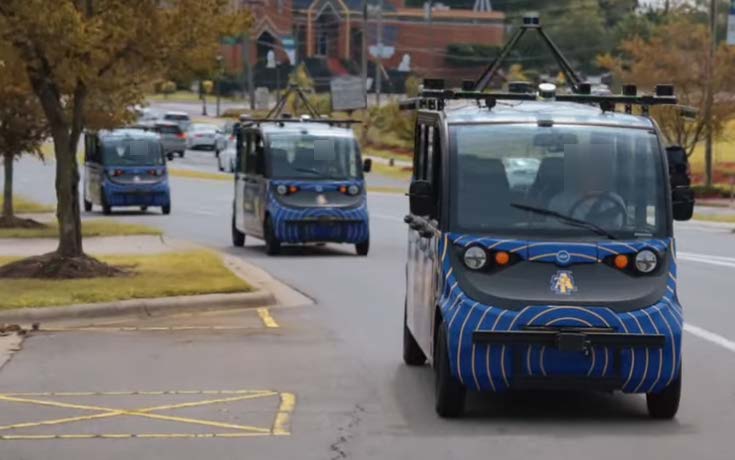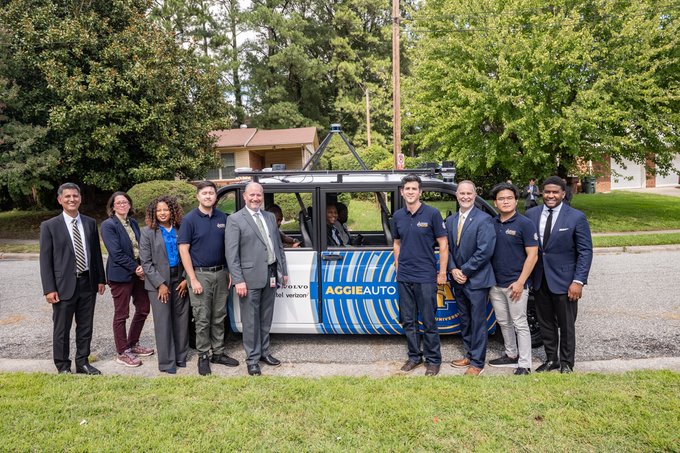This project investigates the feasibility of automated shuttles for deployment in urban and suburban transportation, by piloting Automated Driving System (ADS)-equipped Polaris GEM E6 vehicles in a microtransit service on a route that connects NC A&T’s campus to downtown Greensboro. The project delved into the shuttles' design, particularly their sensor suite, which is crucial for navigating complex suburban landscapes.
The research team performed extensive testing in a controlled environment that mimicked real-world driving conditions expected during public road demonstrations with passenger service. These tests assessed key functionalities such as mapping, localization, object recognition, and motion planning and tracking. The research team then explored the deployment of the shuttles on public streets through a one-month pilot project, analyzing the results using both objective and subjective methods, and highlighting the challenges and opportunities encountered.
By comparing outcomes from both controlled and realworld settings, this project evaluated the feasibility of integrating automated shuttles into public transportation systems, thereby contributing to the ongoing discussion about the practicality and limitations of automated vehicles in urban and suburban areas.

Fleet of Aggie Auto Shuttles used in the pilot project.
This research assists NCDOT in assessing automated shuttles as an emerging technology and supports innovation programs, particularly under the Integrated Mobility Division of NCDOT and initiatives such as the Connected Autonomous Shuttle Supporting Innovation (CASSI).
Findings from this research suggest that while automated shuttles can navigate controlled environments effectively, challenges remain in real-world deployment, particularly in handling unpredictable traffic conditions and ensuring seamless interactions with other road users. Given these insights, NCDOT should consider continuing to support research and refinement of automated shuttle technology before transitioning to full-scale deployment in regular revenue service. Further pilot programs focusing on sensor fusion improvements, Vehicle to Infrastructure (V2I) communication, and enhanced route planning could help address these challenges and support the future expansion of automated microtransit solutions.

